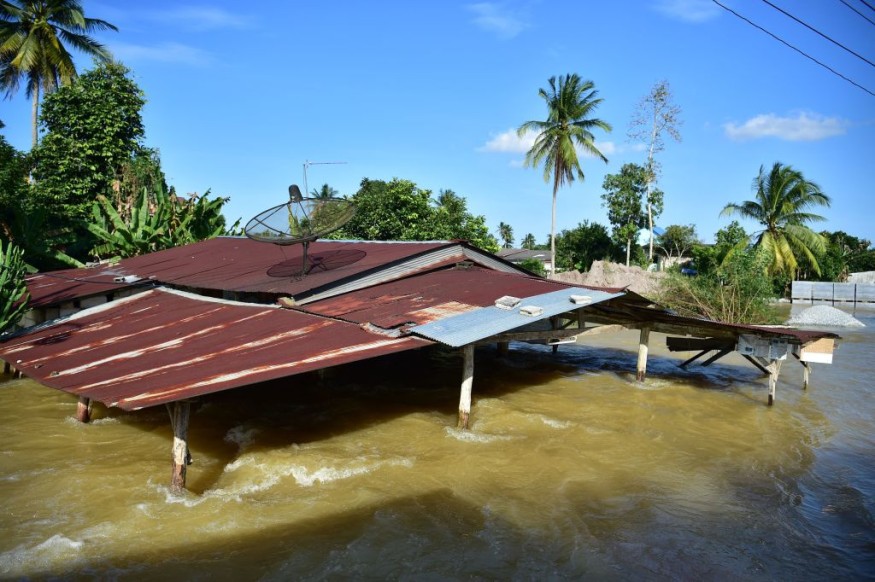Thailand is battered by several days of heavy rainfall and widespread flooding. As a result, thousands of homes are starting to be submerged in the southern parts of the country, including in the provinces of Chumphon, Phatthalung, Nakhon Si Thammarat, Narathiwat, and Surat Thani.
Torrential Rain and Flash Floods

The downpour of rain started on Sunday, April 3, and caused large-scale damage in the mentioned provinces, affecting approximately a total of 21,669 homes, according to the Department of Disaster Prevention and Mitigation (DPPM), as cited by the natural disaster monitoring site Floodlist.com.
The flash floods impacted more than 100,000 people. However, there are no immediate reports of any fatalities and displaced persons.
Nakhon Si Thammarat is the most affected southern province with 20,376 households from 369 villages in 12 districts are under floodwaters.
Its provincial capital with the same name recorded 183 mm. of rain within 24 hours on Monday, April 4.
In addition, 117.1 mm. of rain was recorded in the city on Tuesday, April 5, as per Floodlist.com.
The latest developments suggest that water pumps have been deployed in the region and flooding has started to subside in some areas.
Emergency services also paved the way for providing affected areas with aid and relief supplies.
Thailand Climate
According to the UK weather agency Meteorological Office (Met Office), Thailand is currently in its monsoon season (wet or rainy season), which spans from May to October.
The country normally has warm weather throughout the year, but significant "variations" occur during the wet season.
During the rainy season, Thailand's weather is dominated by the southwest monsoon, which transfers humid air to the country via the Indian Ocean.
The monsoon causes a substantial amount of rainfall released in short bursts during the afternoon or evening for each day, says the Met Office.
Furthermore, the UK weather agency emphasized that September and October are the months to receive the heaviest rainfall. In the case of severe or extreme weather, rainfall during the season may also bring strong onshore winds.
Previous Torrential Rain
The worst recorded rain in Thailand within three decades occurred in 2017 when severe flooding submerged villages in the country.
At least 12 people were killed and hundreds of thousands of people were affected as floods reached the level of a house roof, as per the BBC.
In September 2021, heavy rain triggered flash floods and severe flooding across multiple parts of Thailand, killing six people; five in the central Lopburi region and one in Phetchabun.
30 other provinces have been affected by the severe weather event with more than 24 provinces declared disaster zones.
Prior to the disaster, Thailand officials issued flood warnings nationwide.
The storm affected more than 120,000 households in 30 provinces, according to the DDPM, as cited by the Associated Press.
Last year's downpour was caused by a severe tropical storm. This entails that either monsoon or storm-related torrential rain may occur again in Thailand in the coming months.
During this period, low-lying and mountainous areas are at risk due to flooding and landslides.
© 2025 NatureWorldNews.com All rights reserved. Do not reproduce without permission.





